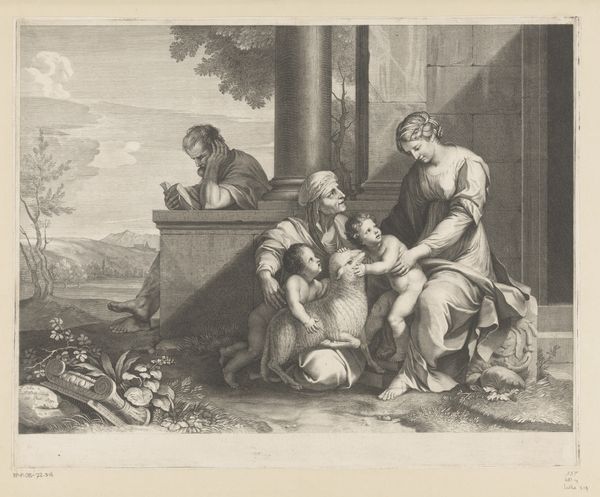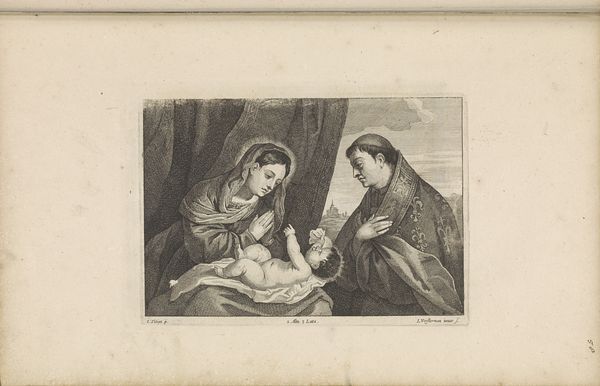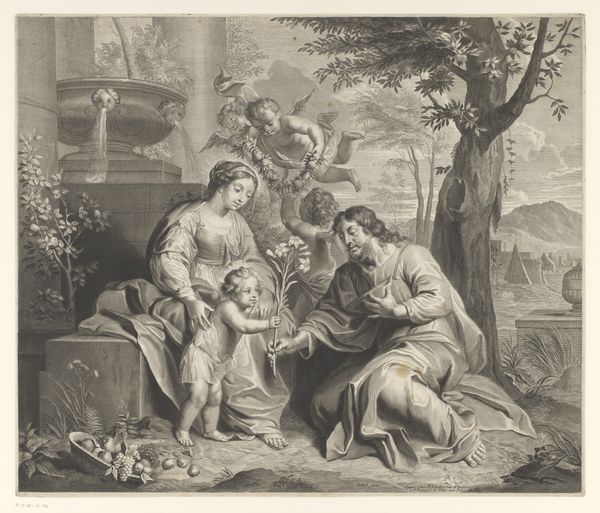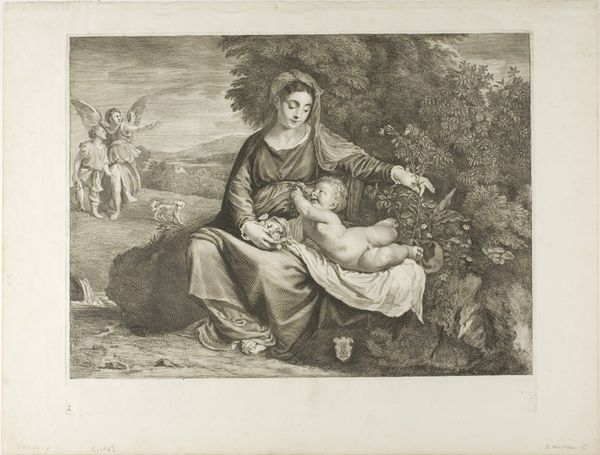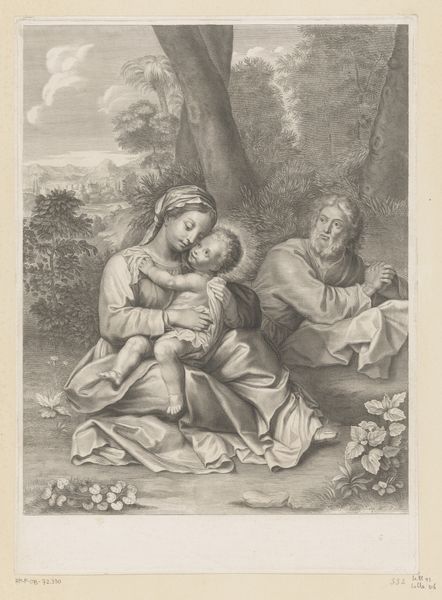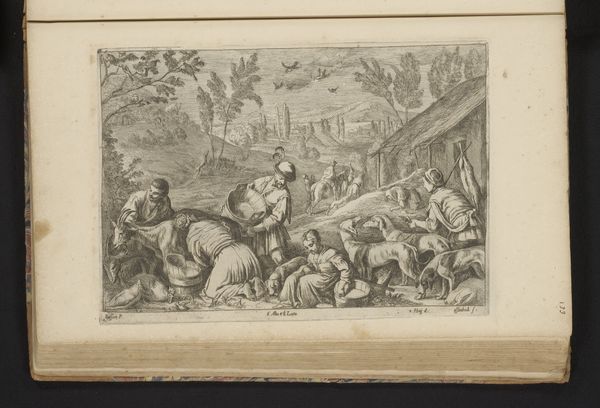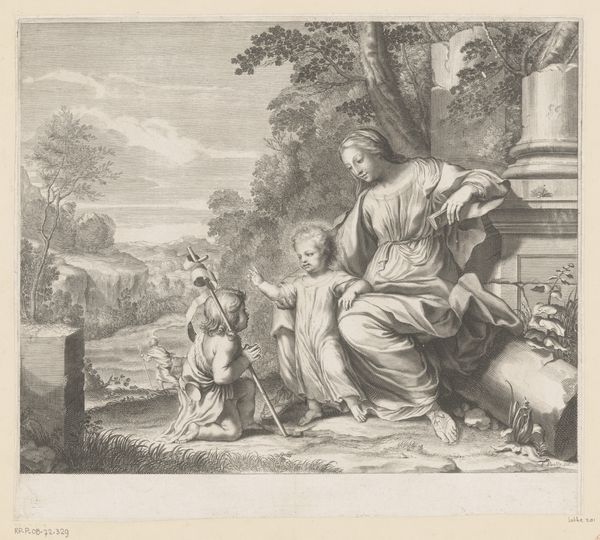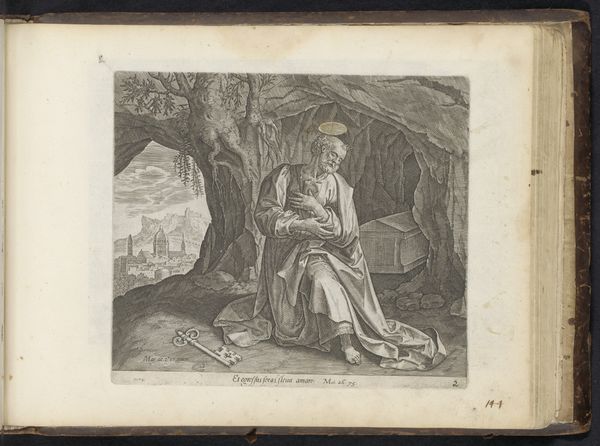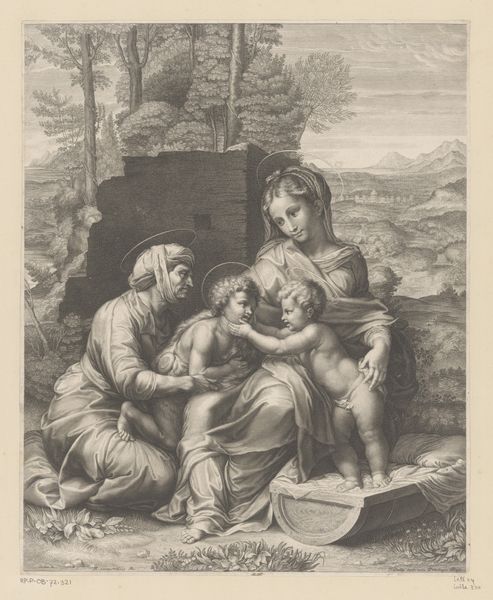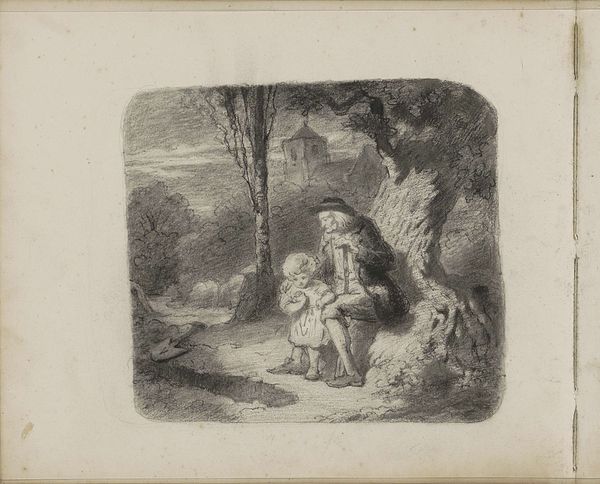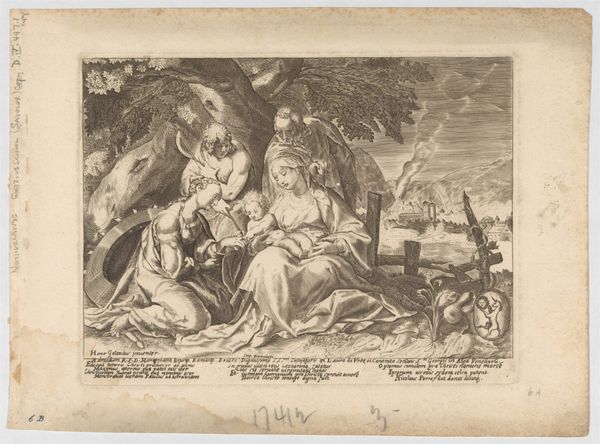
Heilige Familie met de jonge Johannes de Doper en Maria Magdalena 1660
0:00
0:00
print, engraving
#
baroque
# print
#
landscape
#
figuration
#
genre-painting
#
italian-renaissance
#
engraving
Dimensions: height 212 mm, width 306 mm
Copyright: Rijks Museum: Open Domain
Editor: So, here we have Jan van Troyen's "Holy Family with the Young John the Baptist and Mary Magdalene", from around 1660. It's an engraving, and what strikes me most is the tranquility in the figures despite being set against such a broad landscape. What do you make of this scene? Curator: It's interesting that you pick up on the tranquility. Looking at this through a historical lens, we can consider the role of such images within the Catholic Counter-Reformation. Prints like these, circulated widely, aimed to reaffirm faith and piety through relatable scenes of the Holy Family. Do you notice how the landscape is idealized, almost pastoral? Editor: I do, it almost feels Italianate. Was that a common visual strategy at the time? Curator: Precisely. By evoking that Italian Renaissance aesthetic, artists like Van Troyen connected themselves to a tradition of artistic authority. Think about the political power embedded within religious imagery during this period. It’s not just about devotion, it's about control and dissemination of values. Editor: That makes so much sense. It’s like the artwork isn’t just about the Holy Family but also about legitimizing the Catholic Church’s presence and power. Curator: Exactly. Consider how the positioning of each figure, their clothing, and even the details in the background, are carefully arranged to convey certain virtues and solidify religious and societal hierarchies. This print offered accessible piety within a visual language of power. It served as a reminder of faith but also of belonging to a broader social order. Editor: I’m starting to see how this isn't just a nice, peaceful scene, but a very intentional piece of social and religious messaging. It changes how I look at the art, making me think critically about the context that surrounds its creation and reception. Curator: That's precisely what this approach encourages! The "peaceful scene" carries heavy cultural weight when examined within its historical circumstances. It changes the way we experience this piece.
Comments
No comments
Be the first to comment and join the conversation on the ultimate creative platform.
